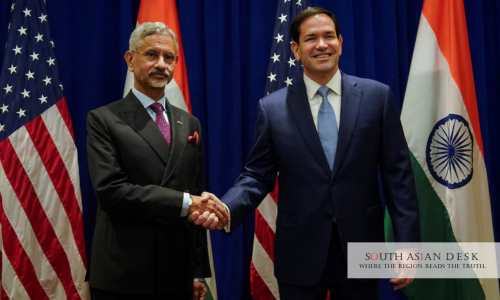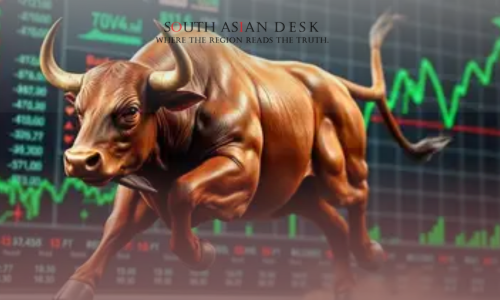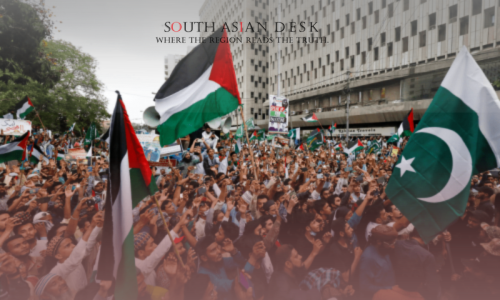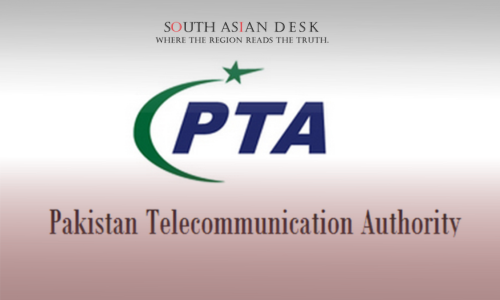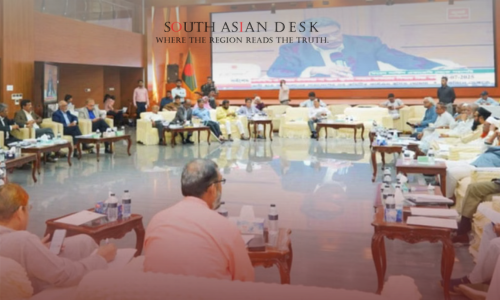As US-India ties navigate fresh hurdles from a steep H1 visa fee hike, Secretary Rubio’s meeting with Jaishankar signals efforts to mend frictions in trade and technology.
New York, United States – US Secretary of State Marco Rubio met Indian External Affairs Minister Subrahmanyam Jaishankar on Monday, September 22, 2025, at 11:00 AM in New York City to discuss bilateral priorities, amid concerns over President Trump’s recent H1 visa policy imposing a USD 100,000 fee, which affects thousands of Indian professionals and strains India ties.
Why It Matters for South Asia
In a region where remittances from skilled migrants fuel economic growth, the Trump H1 visa changes could disrupt USD 10 billion in annual contributions to India’s IT sector, potentially slowing innovation and job creation across South Asia. As Rubio underscores robust India ties, this dialogue highlights the need for balanced immigration policies to sustain strategic partnerships, influencing talent flows to hubs like Bangalore and Hyderabad while countering geopolitical shifts in the Indo-Pacific.
Rubio Highlights Strength of India Ties Post Trump H1 Visa Announcement
The bilateral meeting, held at the Lotte New York Palace Hotel on the sidelines of the 80th United Nations General Assembly, marked a key moment in US-India diplomacy following recent policy shifts. Secretary Rubio, a vocal advocate for strategic partnerships, reiterated that India represents a “relationship of critical importance to the United States”. He expressed appreciation for New Delhi’s engagement on trade, defence, energy, pharmaceuticals, and critical minerals, according to a State Department readout.
Minister Jaishankar, in response, agreed on “the importance of sustained engagement to make progress in priority areas”. The discussions also touched on promoting a free and open Indo-Pacific, including through the Quad framework involving the US, India, Japan, and Australia. This comes just days after President Trump’s September 19, 2025, executive order introducing the USD 100,000 fee for new H1 visa applications, effective from 12:01 AM on September 21, 2025, a measure aimed at curbing what the administration calls “abuse” of the programme.
India, the largest beneficiary of H1 visas, accounted for 71 per cent of the 85,000 approvals in fiscal year 2024, per US Citizenship and Immigration Services data. The fee hike, roughly 60 times the previous USD 1,500 to USD 2,805 range, has sparked alarm in Indian tech circles, with firms like Tata Consultancy Services and Infosys warning of elevated costs and hiring disruptions. India’s Ministry of External Affairs has flagged potential “humanitarian consequences” for families, underscoring how the Trump H1 visa policy intersects with broader India ties.
Trump H1 Visa Policy Strains Bilateral Tech Collaboration
The Trump H1 visa initiative forms part of a wider recalibration of US immigration under the second Trump administration. Announced via a presidential proclamation titled “Restriction on Entry of Certain Nonimmigrant Workers”, it targets new petitions without affecting existing holders or the 2025 lottery participants, as clarified by the White House. Yet, for Indian professionals, over 400,000 of whom hold H1 visas, the change threatens to inflate operational expenses for outsourcing giants, potentially redirecting talent to competitors in Europe or Canada.
This development compounds tensions from Trump’s simultaneous imposition of extra tariffs on Indian imports, linked to New Delhi’s purchases of discounted Russian oil amid global energy volatility. The tariffs, estimated at 10-15 per cent on select goods, have stalled progress toward a Bilateral Trade Agreement, despite “positive discussions” during a US Trade Representative visit to India on September 16, 2025. Commerce Minister Piyush Goyal’s planned US trip on September 22 underscores urgency, with both sides committing to “intensify efforts” for a deal.
Rubio’s role in these talks is pivotal, given his long-standing emphasis on countering China’s influence through fortified India ties. As a former senator, he has championed defence pacts like the Initiative on Critical and Emerging Technology (iCET), which facilitates semiconductor and AI collaboration. The meeting builds on their July 2025 encounter at the Quad Foreign Ministers’ Meeting in Washington, DC, where energy security and maritime domain awareness were prioritised.
Rubio’s Diplomacy in Bolstering India Ties
Secretary Rubio’s approach reflects a pragmatic thread in Trump-era foreign policy: leveraging economic levers while preserving alliances. In the State Department’s words, the session covered “other items related to the bilateral relationship”, including pharmaceuticals, vital as India supplies 40 per cent of US generic drugs, and critical minerals for electric vehicles. Both ministers pledged continued Quad cooperation, with upcoming initiatives like the Maritime Initiative for Training in the Indo-Pacific (MAITRI) workshop slated for late 2025.
For South Asian economies, the Trump H1 visa ripple effects extend beyond India. Neighbouring nations like Pakistan and Bangladesh, reliant on diaspora remittances, face indirect pressures as global talent markets tighten. Yet, Rubio’s reassurance signals potential mitigation: historical precedents show US-India dialogues yielding visa cap exemptions for certain sectors, fostering resilience in India ties.
Data from the Indian Embassy in Washington indicates bilateral trade reached USD 190 billion in 2024, up 8 per cent year-on-year, driven by defence deals worth USD 20 billion since 2008. The current frictions, however, risk eroding this momentum, with Indian industry estimating a 15-20 per cent cost surge from the H1 visa fee alone.
Background
US-India relations have deepened since the 2005 civil nuclear deal, evolving into a Comprehensive Global Strategic Partnership. Under Trump’s first term, tariffs sparked a mini-trade war, resolved via a 2020 limited agreement. The second term’s early moves, H1 visa reforms and oil-related tariffs, echo protectionist themes, yet frameworks like the 2+2 Intersessional Dialogue in August 2025 affirm defence interoperability. Minister Jaishankar’s January 2025 Washington visit, including a Quad statement, laid groundwork for sustained engagement, even as geopolitical flux tests ties.
What’s Next for Trump H1 Visa and India Ties
With Commerce Minister Goyal’s concurrent US engagements, follow-up mechanisms could address Trump H1 visa impacts through sector-specific waivers or joint task forces. As Rubio and Jaishankar eye the October 2025 Quad Ports of the Future conference in Mumbai, resolving these hurdles will be essential to advancing equitable India ties and regional stability.
Published in SouthAsianDesk, September 23rd, 2025
Follow SouthAsianDesk on X, Instagram, and Facebook for insights on business and current affairs from across South Asia.


